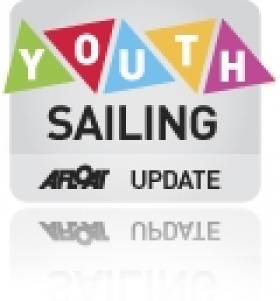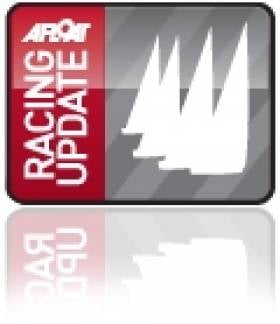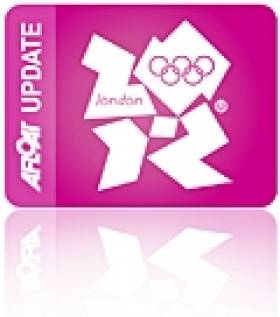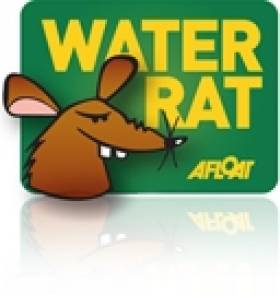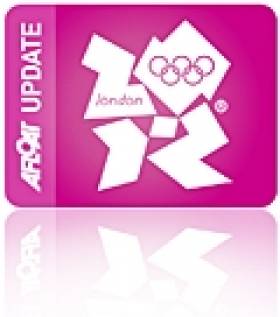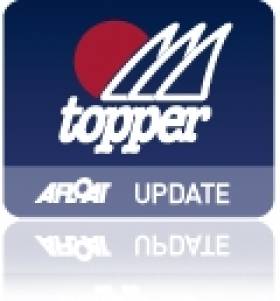Displaying items by tag: Murphy
Irish Scullers, Pair and Four Win at World Masters
#Rowing: Two Irish scullers, a four and a pair led the Irish charge at the World Masters Regatta in Bled in Slovenia today. Denis Crowley of Commercial and Sean Heaney of Galway joined John Hudson and Gerry Murphy of Neptune as medal winners. The four of Rob Forde, Patrick Fowler, Oisin McGrath and Gary O’Neill also won – but after being adjudged late in the heat they had entered. They were moved into another heat, and came out on top there.
Three Irish eights just missed out, taking second place in their heats.
World Masters Regatta, Bled, Slovenia, Day Two (Selected Results; Irish interest; all heats of 1,000 metres, winners only)
Men
Four ‘C’ (avg age 43 or more) – Heat Five: Commercial, Clonmel, Neptune (R Forde, P Fowler, O McGrath, G O’Neill) 3:18.46.
Pair ‘E’ (avg 55 or more) – Heat Six: Neptune (J Hudson, G Murphy) 3:41.11.
Sculling, Single ‘D’ (50 or more) – Heat 11: Galway RC (S Heaney) 3:50.17. Heat 16: Commercial (D Crowley) 3:48.93.
Murphy Second, O'Leary/Burrows Third in Windy Weymouth
In the Star class, Peter O'Leary and David Burrows are third after four races in the 21–boat keelboat class.
470 veteran Gerbil Owens sailing with Scott Flanigan got off to a flyer at the test event in Weymouth. Scoring a 10th and a 5th on Friday racing the pairing lay in 7th overall but have dropped back to 17th after further rounds at the weekend.
Blustery winds ranging from 19-24 knots welcomed the sailors on the sixth day of sailing at the Weymouth and Portland International Regatta, the Olympic Test Event.
And it was the Australians that excelled throughout the day as Tom Slingsby took the lead in the Laser, Nathan Outteridge and Iain Jensen went ahead in the 49er and Mathew Belcher and Malcolm Page notched up double bullets.
Belcher and Page put their poor start to the regatta behind them as they won both of their races to move up to second overall in the Men’s 470. After the first four races of the regatta the Men’s 470 ISAF Sailing World Cup title holders had a card of 12-11-10-2 and were down by a considerable margin to leaders Pierre Leboucher and Vincent Garos (FRA). But they found their way on the third day of 470 sailing to stay in contention. Belcher said, “It was nice to be racing inside the harbour and to have that experience again. It felt more like our boat today. It felt normal. We settled down a little bit and we are getting used to the Olympic course.”
Overnight leaders Leboucher and Garos (FRA) remain in the lead after they maintained their consistency from the opening two days of racing. They came second in Race 5 and discarded their ninth in Race 6. They lead on 13 points with the Australians in second on 25 points and Japan’s Tetsuya Matsunaga and Kimihiko Imamura are third on 28 points.
In the Women’s 470 Hannah Mills and Saskia Clark (GBR) continue to lead after a steady day on the water. The Brits discarded their eighth in Race 5 before coming second in Race 6 to end the day on 14 points. Ai Kondo and Wakako Tabata (JPN) won Race 5 and came fourth in Race 6 to move from fifth to second overall on 24 points. Gil Cohen and Vered Bouskila (ISR) won Race 6 and jump up to third place.
Outteridge and Jensen (AUS) swapped places with Iker Martinez and Xabier Fernandez (ESP) in the 49er after the Australians recorded their third bullet of the regatta in Race 6. The Australians came fifth in Race 4 and seventh in Race 5 before winning Race 6 by six seconds ahead of Gianfranco Sibello and Pietro Sibello (ITA). On their day Outteridge said, “It was really good for us today. It was really windy and a bit shifty but the flat water was great. We had a shocker in Race 4 but that was down to me as I had a swim. We ended fifth because of that. But it didn’t hurt us too much as the Spanish had two swims.”
Outteridge and Jensen lead on 15 points with the Spaniards, who won Race 4, second on 18 points. Race 5 winners Peter Burling and Blair Tuke (NZL) are third on 21 points after finishing third in the days other two races.
Australia were once again at the top of the podium in the Laser as ISAF Rolex World Sailor of the Year Tom Slingsby (AUS) put in another strong performance. The World #1 came ahead of Rutger Van Schaardenburg (NED) by six seconds in Race 5 but the Dutchman hit back in Race 6 taking a comfortable 31 second victory. Overnight leader Andrew Murdoch (NZL) went 11-4 to slip to second trailing Slingsby by eight points and Van Schaardenburg’s 2-1 moved him from eighth to third overall on 25 points.
World #1 Laser Radial sailor Marit Bouwmeester (NED) continued her fantastic regatta with her third race win and a second. With eight points she leads Annalise Murphy, in second on 26 points, and Krystal Weir (AUS), on 27 points, in third.
Pieter Jan Postma (NED) relished the windy conditions on the Weymouth Bay West course to pick up two convincing race wins in the Finn. The Dutchman won Race 3 by 52 seconds and Race 4 by 16 seconds and is third overall on 17 points. Ben Ainslie (GBR) continues to lead on 14 points despite a 6-5 with Jonathan Lobert (FRA) in second on 14 points. Ainslie maintains his lead after his win in Race 2 but with the discard coming into play tomorrow there may well be changes.
ISAF Sailing World Cup Star title holders Robert Scheidt and Bruno Prada (BRA) once again showed they are the team to beat in the 21-boat Star fleet. The Brazilians went 1-2 to lead on five points. Mark Mendelblatt and Brian Fatih (USA) won Race 4 but are seventh overall on 31 points.
The Brazilians nearest rivals are Poland’s Mateusz Kusznierewicz and Dominik Zycki. The Polish Star sailors are on 19 points and have a long way to go to catch up with the Brazilians.
The Laser, Laser Radial and 470 enjoy a reserve day tomorrow but the 49er, Finn, RS:X and Stars continue racing. Places 5-8 in the Women’s Match Racing will also be decided tomorrow before Tuesday’s Semi Finals.
Murphy Stays in Top Ten at Youth Worlds
In spite of two thirtieth places scored in today's penultimate rounds Irish sailor Sophie Murphy stays in the top ten of the ISAF Youth Worlds in Zadar, Croatia. The Royal St George Yacht Club and Quoile Yacht Club Laser single-hander struggled in day fives stronger breezes, the first of the competiton.
Murphy can stay top ten, an important target, if she has a good final race tomorrow morning.
420 duo Emma Geary from Royal Cork Yacht Club and Niamh Connolly from Baltimore Sailing Club were definitely back on form today having been hampered by yesterday's lighter winds. The girls relished the medium breeze today placing 10th and 6th respectively in their two races. They lie 18th overall.
Philip Doran of Courtown Sailing Club and the National Yacht Club caught up to 12th place during his first race of the day but lost out on the final downwind which saw him finishing in 22nd. He fared better in his second race sitting fifth for the duration until the final mark when he was yellow flagged, the penalty saw him finish ninth leaving him 15th overall.
Meanwhile, Maxime Mazard (FRA) and Giovanni Coccoluto (ITA) go into the final day of racing at the 41st ISAF Youth Sailing World Championship in Zadar, Croatia with just one point separating them in the Laser Radial Boys fleet.
The Frenchman, who has led for the majority of the week, finished 25th and seventh today and has seen his five point overnight lead reduced to a single point after Coccoluto came seventh in Race 10 before discarding his disqualification in Race 11.
The final race tomorrow will decide who takes the gold medal home for their nation and it should be a fascinating finale.
RYA Volvo Team GBR sailor Cameron Douglas shone in the breeze today finishing with a bullet and a second place, he said, “It was an awesome day. We had a bit of breeze for the first time this week so I’m very happy. It has been a really great event.”
Australia’s Matthew Wearn won the days other race but did not finish Race 11 and is down in 26th place and Žan-Luka Zelko is third on 114 points trailing Mazard by eight points.
In the Laser Radial Girls Erika Reineke (USA) also finished with a race win and a second place. The American, who is a full time member of US SAILING’s Team Alphagraphics, said, “I liked today a lot better. There was a little bit of breeze and there was some nice waves. I was pretty far away from the gold today, 19 points, and I think I caught up a bit. I’m just going to go out and try my hardest tomorrow and try to win.”
Tiril Bue regained the lead in the Radial Girls fleet after she was consistent in the breeze finishing third in Race 10 and fourth in Race 11. Overnight leader Paulina Czubachowska came through in 10th and 11th today and has dropped to third overall. Manami Doi (JPN) maintains her second place overall but just two points separate Doi, Czubachowska and Reineke so it should be an interesting climax.
And like the Laser Radial Boys it will be winner takes all between Veronica Fanciulli (ITA) and Siripon Kaewduang-Ngam (THA) with just one point separating the pair in the RS:X Girls. Fanciulli went 2-4 today and Kaewduang-Ngam finished third and recorded a bullet to pull the overnight deficit down to a single point. Naomi Cohen (ISR) is third on 32 points and Agnieszka Bilska (POL), who claimed the days other bullet, is fourth on 36 points.
With three bullets today Louis Giard has leapt into second place in the RS:X Boys on 36 points. But Cho Wonwoo (KOR) continues to lead and will take a six point advantage into the final day following three RS:X races today. The Korean finished 2-4-6 today. Spain’s Mateo Sanz had a minor dent in his scorecard today following a tenth place in Race 9 but bounced back with a third and second. He is third overall on 37 points.
Morgan Kiss and Christina Lewis (USA) closed the gap on 420 leaders Lara Vadlau and Tanja Frank (AUT) to four points ahead of the final day. The Americans finished 4-5 today compared to the Austrians 8-2. Nikole Barnes and Agustina Barbuto (ISV) retain their third place following two seventh place finishes today. Today’s race wins went to Carrie Smith and Ella Clark (AUS) and Maelenn Lamaitre and Aloise Retornaz (FRA).
2010 ISAF Youth Worlds gold medallist Jordi Xammer with new crew Alex Claville regained the lead in the 420 Boys following a tenth and fourth place finish. They lead Japan’s Daichi Mototsu and Yuki Hino by eleven points. Angus Galloway and Alexander Gough (AUS) stay in third place going into the final day and have a two point advantage over Guillaume Pirouelle and Valentin Sipan (AUS)
In the SL16 Brazil’s Martin Lowy and Kim Andrade take a 13 point lead into the final day after they came eighth twice today. And with a fleet of 14, the boys from Brazil will need to sail a steady race tomorrow to seal the deal. Nicolaj Bjornholt Christiansen and Daniel Bjornholt Christiansen (DEN) had a good day coming second and third and are second overall on 37 points. And Great Britain’s Rupert White and Nikola Boniface are third on 48 points.
Carlos Robles and Florian Trittel have an impressive 19 point lead ahead of the final day after a bullet and a sixth place finish in the 29er. The Spaniards have only finished out of the top six twice and with a string of consistent results it would be hard to bet against the Spaniards claiming gold. The race for second place is interesting with Max Deckers and Annette Duetz (NED) on 51 points, Antoine Screve and Max Agnese (USA) on 53 points and Josh Franklin and Lewis Brake (AUS) on 56 points. The days other race win went the way of France’s Gael Jaffrezic and Julien Bloyet who are down in eighth place.
One race in each fleet will take place tomorrow to decide the medals and racing begins at 12:00 local time.
Laser Radial Girl Sophie Murphy is closest to Ireland's goal of sailing to a top ten result at this week's ISAF Youth Worlds in Croatia where conditions at the halfway stage continue to be light and tricky.
The event has added interest for Ireland as it will be staged next year on Dublin Bay, a venue alos know for its flukey winds. The Dublin organiser of the event Brian Craig is in Croatia to monitor progress there.
Murphy scored well in her first of the race of day three with a fourth after having a race win yesterday. She followed that with a 16th and 20th in the 41–strong fleet which leaves her in eleventh position overall going in to the rest day tomorrow.
Cork duo Emma Geary and Niamh Connolly in the 420 finished 17th and 21st today which sees them lying 17th overall.
Philip Doran from Courtown SC in the Laser Radial boys had a disappointing day fininshing 26th overall in the 49 boat fleet. Philip who is no stranger to large international competition (former 4.7 World Champion and the u17 Radial World Champion) remains optimistic and looking forward to a rest day tomorrow before the second half of the event recommences on Wednesday.
Racing Round up: Dun Laoghaire Regatta, ISAF Youths, Optimists, Paralympic, RORC, WIORA, Quarter Ton, Kiteboarding.
In offshore news, the Transatlantic Race 2011 Nears a Finish, and RORC yachts that headed West did best in the St Malo from Cowes race. Ireland's entry in the Tall Ships race, Celtic Mist, is safely in Scotland. WIORA starts this week in Clifden, thirty boats are expected.
Two top Cork performers are in Cowes for this week's Quarter Ton Cup.
In other boating news, rower Siobhan McCrohan won bronze at the World Rowing Champs in Lucerne, Kiteboarding debuted in Dun Laoghaire. There were Medals for Irish Kayakers at Athens Special Olympics.
And finally after a Elaine 'Shooter' Alexander is set for hero's welcome this week as she becomes the first woman from Northern Ireland to circumnavigate the island of Ireland.
All on our home page this morning, thanks for your interest in Irish Sailing and Boating.
Ireland is on the entry list in six classes for the Weymouth and Portland International Sailing Regatta 2011, the London 2012 Olympic Test Event, that has been finalised today.
Ireland's leading hopes for a top result is in the Radial class where Annalise Murphy took bronze at the Sail for Gold regatta at the same venue. There's also high chances in the Star class with Peter O'Leary and David Burrows. Also sailing for Ireland is James Espey is in the Laser, Ross Hamilton in the Finn, Ger Owens and Scott Flannigan in the 470, Ryan Seaton and Matt McGovern in the 49er. A full entry list is available for download at the end of this post.
Sixty six nations have submitted the names of the 460 sailors who will test the conditions at Weymouth and Portland one year ahead of the London 2012 Olympic Sailing Competition.
For many of Member National Authorities there has been a selection headache with nations following game time rules where only one athlete per event is allowed.
In the Finn class Great Britain's Ben Ainslie was selected ahead of Giles Scott and Ed Wright, Spain's Marina Alabau received the nod ahead of Blanca Manchon and Anna Tunnicliffe (USA) lost out to Sally Barkow (USA).
The Women's Match Racers open the Weymouth and Portland International Regatta on 2 August 2011 with the start of their Round Robins. The Men's and Women's RS:X begin on 4 August followed by the Laser, Laser Radial and Men's and Women's 470 on 5 August before the Finn, 49er and Star sailors begin their competition on 6 August.
The London 2012 Olympic Games Sailing Competition will take place at the Weymouth and Portland Sailing Academy and Portland Marina, located in Dorset on the South Coast of England. Racing is scheduled to take place from 29 July to 11 August.At the 2012 Games sailing will introduce women's match racing for the first time. The racing format will be a single round-robin, quarter finals, semi-finals and then the finals. The nine fleet racing events will all sail an opening series before the top ten in each event contest a double-points Medal Race to decide the final positions. The Medal Races have a target time of approximately 30 minutes and will take place close to the shore at the Nothe to allow spectators ashore to get close up to the action.
Are Two Medals a Realistic Expectation from Weymouth?
Afloat opinion: The recent results in World Cup sailing regattas will give rise to considerable optimism in Irish sailing circles that David Wilkins and Jamie Wilkinson's successful performance in the boycott affected 1980 Olympics may be repeated. There have been pretenders to the throne in intervening years – O'Hara, both Lyttles, Mansfield and Burrows are among the names that have quickened the pulses only to be found wanting in the pressure cooker that is the Olympic regatta.
In the previous era there was talk of saving performances for key events – peaking so to say. Nowadays the leading sailors bring their "A" game to every regatta and the consistent nature of the performances being recorded by Annalise Murphy and Peter O'Leary, notwithstanding the changes of crew in the Star class, suggests that this summit has been reached.
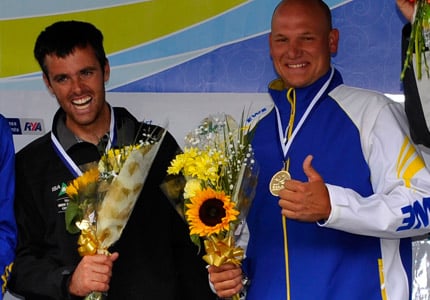
Peter O'Leary (left) wins Gold in 2010. Photo: OnEdition
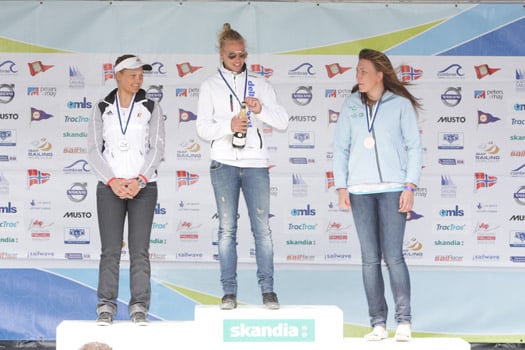
Annalise Murphy (right) wins bronze in 2011. Photo: OnEdition
Murphy's progression in the last few years has been extremely impressive. An eighth place at the Laser Radial Worlds in 2009 preceded a successful period on the Australian circuit with a subsequent progression into the world's top ten. In her last two world cup regattas she has finished fifteen times in the top ten and has won ten races. Her win rate at the Skandia Sail for Gold regatta on the Olympic course was matched only by Ben Ainslie. Inconsistency prevented her from taking first place in both events.
The Star class is studded with achievers, and the top of the fleet is currently littered with Olympic Medallists and World Champions in a number of classes. That the Irish team can compete at this level is beyond doubt, winning at Skandia Sail for Gold last year and finishing 2nd by one point at the Bacardi Cup.
That all three athletes are outstanding sailors may have something to do with their sailing steeped DNA. Additionally, the Star pairing have Olympic experience, although not together. While it may be paradoxical to suggest that in certain circumstances such background and experience might not be 100% positive, the sailing team management will need to set out their stall in an early and positive plan which has buy in from all the connections, clearly defining roles and responsibilities.
The plan must also identify the work necessary to eliminate the inconsistencies that have prevented regular and frequent podium performances. Whether it is course management, tactical decision-making or boat speed (not a problem in certain conditions), it is not a time to be faint hearted in regard to ensuring that the best possible specialist coaches are employed to work on these areas. The ISA management team will need to understand their own strengths and weaknesses, using all the resources available, particularly those provided through the Institute of Sport, so that two medals can be a realistic achievement in Weymouth. Peter, David and Annalise deserve no less.
Comment on this article by writing to us HERE.
Irish Olympic Crews in Top Twenty of World Rankings
Peter O'Leary who has been sailing with three different crews, David Burrows, Frithjof Kleen and Timothy Goodbody to date is ranked 17th by the International Sailing Federation (ISAF).
O'Leary and Burrows sailing in the Star keelboat class were recent top finishers at 93-boat fleet in Miami. They finished second overall after they lost the overall lead in the last race of the 2011 Bacardi Cup.
Listen into a podcast about Peter O'Leary's Olympic sailing plans HERE.
Fellow Olympic squad member, 21-year old Annalise Murphy from Dun Laoghaire is now ranked 12th in the Laser radial class counting seven ISAF events. Murphy has also had success in Florida this season, she finished fourth in the Miami Olympic Classes regatta in January.
Listen to what Team Manager James O'Callaghan has to say about her progress:
The next release of the ISAF World Sailing Rankings will be on 13 April 2011 and will include the Trofeo SAR Princess Sofia Mapfre in Spain.
The ISAF World Sailing Rankings rate skippers based on their performances over the last two years. Skippers score points by competing in ISAF Graded events. The top finishers at all ISAF Graded events score Rankings points, with the highest points awarded to the event winner and then decreasing down relative to position.
More Irish Olympic Sailing News HERE.
Dun Laoghaire Set for Topper World Champs
The club is expecting a turnout of up to 300 sailors that will make it the biggest dinghy sailing event in the country this year. "We will have a large contingent from the UK and many sailors from far away – we have had interest from Korea, Japan and Hong Kong, for example". Says Margaret Margaret Kneafsey, Chairperson of the Organising Committee.
Carlow sailor Finn Lynch, 16, who is the reigning British and Irish champion finished third in the 2010 World Championships in Lake Como, Italy.
The event has its own website with details on accommodation and logistics and entries.






























